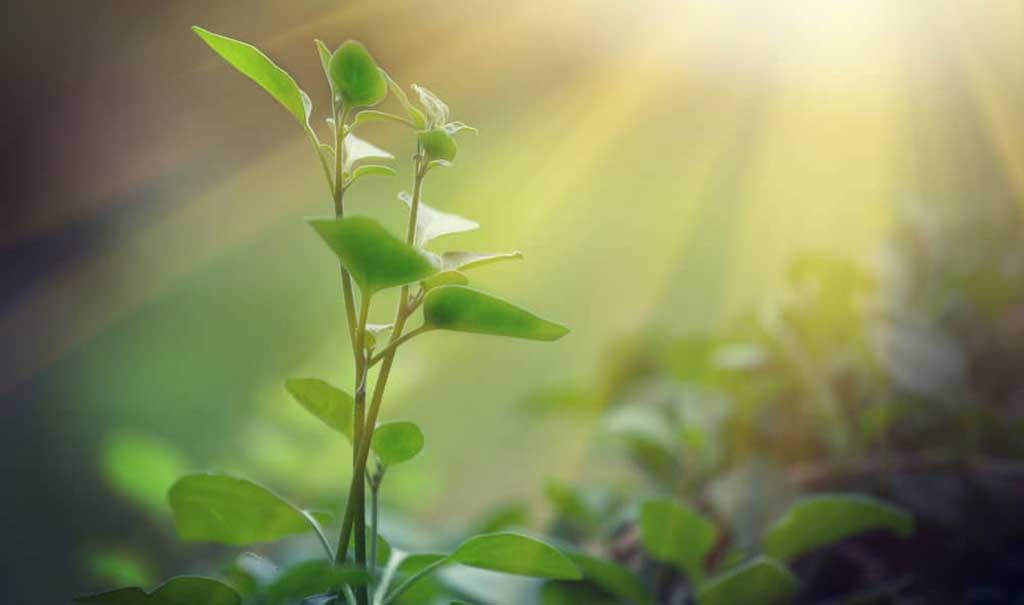PAR is the acronym for Photosynthetically Active Radiation. It specifically refers to the wavelengths of visible light that are primarily used by green plants to fuel the chlorophyll that feeds the plants. Managers of indoor plant growing facilities might be tempted simply to increase all wavelengths of light to maximize PAR and therefore to encourage plant growth. That strategy might work, but those managers can achieve even better growth by controlling the relative concentrations of different wavelengths of visible light in their growing facilities with a spectrum that’s specifically calibrated to nourish plants at each stage of the grow cycle. That’s the OpticPAR™ approach to fine-tuning your light’s color spectrum for maximum PAR for growth and yield.
Understanding PAR in Context
Where grow lights are concerned, PAR is typically discussed in tandem with photosynthetic photon flux (PPF) and photosynthetic photon flux density (PPFD). PPF is a measure of how much light reaches a plant within a certain amount of time, and PPFD describes the amount of light that hits a defined surface area of plants.
A professional grower interested in maximum yield first needs to determine that the facility’s grow light system is generating the correct relative concentrations of light wavelengths to match the plants’ needs at specific points in the growing cycle. This color spectrum can be fine-tuned by LED engineers here at SpecGrade LED for maximum benefit to your specific crop. Once that’s dialed in, the next step is to verify that as much of the light output as possible is actually reaching the plants in the right quantities to maximize crop yield.
How this works in practice is best demonstrated by considering indoor cultivation of plants. Plants include concentrations of chlorophyll A and B, these two forms playing different roles in the development of the plant. To encourage more robust vegetative growth, a cultivator can shift a grow light source’s PAR to focus on chlorophyll A, which responds better to light in the red to violet visible light range with wavelengths between 430 and 600 nm.
As the plants grow and reach their budding stage, the cultivator will adjust PAR to include a broader range of wavelengths that achieve a different balance between chlorophyll A and B. Plants also rely on secondary components that activate chlorophyll A and B differently. A cultivator who is armed with this knowledge can fine-tune the grow light source’s PAR concentrations to optimize crop growth and yield.
The Secret is in the Optics
Some grow light systems might provide good PAR control, but if their optical configurations are weak, the amount of quality light that reaches the plant surfaces will be equally weak, particularly due to the wasteful light loss of undirected beams scattering into the aisles and across the wall. The engineering that separates a high quality LED grow light from the knock-offs is the application of advanced optics. In order to take full advantage of the light your fixture is producing (and the energy it’s consuming), the optics need to focus the entire beam toward the crop without waste or sloppy spill.
To verify that plants are getting sufficient quantities of PAR-optimized grow lighting, cultivators can measure PPF and PPFD at several locations throughout their facility. LED grow lighting systems, for example, can have high PAR ratings directly in front of a fixture, but that rating will drop significantly as measurements are taken at oblique angles or in the lower canopy of the crops. If your fixture isn’t taking control of the beam and directing 100% of the PAR onto the surface area of the plants, you’re wasting energy and the yield will suffer.
OpticPAR™ Offers Next Generation Optics for Advanced LED Grow Lights
At SpecGrade LED, we have addressed this issue with our new Canna, Verta, and Linea grow lighting systems, each featuring advanced OpticPAR™ Technology. Each of these three systems is optimized to give cultivators full control of available PAR while optimizing PPF and PPFD throughout an indoor growing facility.
The Canna grow light system is designed for large commercial indoor cultivation facilities. Its Linea system is perfect for linear greenhouses, and our low profile Verta is optimized for vertical growing racks that are becoming popular in urban areas. Like all of SpecGrade LED’s systems, our grow light products deliver more than 100,000 hours of high-quality indoor lighting and require minimal maintenance with an easy, modular design.


